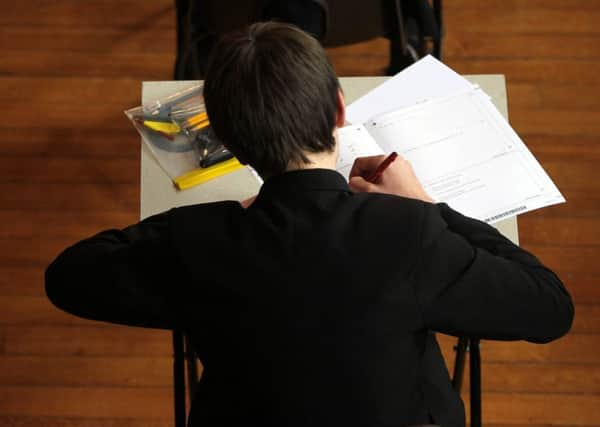Half a million children in under-performing schools


Across Yorkshire, there are now 19 schools – the lowest proportion of secondaries across the whole of England – which are deemed to be below minimum standard. But nationwide, the figures reveal, more than 300 secondary schools are performing below floor standard, as attainment widens for the most disadvantaged students.
A secondary is considered to be below standard if, on average, pupils score half a grade less (-0.5) across eight GCSEs than they would have been expected to compared to pupils of similar abilities nationally.
Advertisement
Hide AdAdvertisement
Hide AdThe data, which covers every secondary in England, looks in-depth at progress for pupils, with the DfE arguing this is a “starting point” for improvement. School leaders though, have warned that such measures are “long past their sell-by date”, urging parents to look beyond the data.
“Performance tables can never tell the full story of a school and we urge parents and governors not to place too much weight on them,” said Geoff Barton, general secretary of the Association of School and College Leaders.
“The secondary school performance tables are inherently flawed in that the headline measure of Progress 8 which is used to judge the performance of schools effectively penalises schools which have a high proportion of disadvantaged children. The effect of this is to stigmatise these schools, making it more difficult to recruit headteachers and teachers and demoralising pupils, parents and communities.”
The figures show the proportion of pupils achieving a grade 5 or above at GCSE in both English and maths has increased, from 42.6 per cent last year to 43.3 per cent this year. In mainstream schooling, the figures reveal, 11.6 per cent of England’s schools are below minimum standard. The proportion in Yorkshire, which has traditionally fared poorly in league tables, is almost half that after improving steadily for three years. The region also has a low number of schools classed as ‘coasting’, at 5.5 per cent compared to 9.2 per cent nationwide.
Advertisement
Hide AdAdvertisement
Hide AdProgress in Yorkshire did dip in the last year, although it is comparable with the national average. Attainment too has dropped, the figures show, with Yorkshire’s scores having fallen for the past three years.
It comes just a month after Yorkshire was placed at the bottom of league tables at primary level, with 62 per cent of children aged 7-11 reaching expected standards. Now North Yorkshire and York both ranked top of the tables in the region for progress, attainment and number of students gaining a strong pass at GCSE. This, said County Coun Patrick Mulligan, could set a “sense of pride for the region”.
“We are determined that all students can meet their full potential and that our schools continue to offer excellence and a broad, balanced and appropriate curriculum,” he added.
There were disparities across the region, with schools in Doncaster and Barnsley found to have the lowest attainment scores. Bradford was found to have one of the region’s highest rates of under-performing schools, at one in seven. Coun Imran Khan, portfolio holder for education, said: “We have some excellent secondary schools in our district that have made good progress.
Advertisement
Hide AdAdvertisement
Hide Ad“But there are some schools that aren’t achieving at the level they should be. We know as a district that we have more to do to ensure that every child’s chances of success in education is as good in Bradford as it is anywhere else in the country.”
The attainment gap between disadvantaged pupils and others has increased slightly, the DfE figures reveal, rising by 0.6 per cent between 2017 and 2018.
“Today’s figures show that disadvantaged young people continue to be significantly less likely to achieve crucial GCSEs in English and maths than their better off peers,” said Andy Ratcliffe, chief executive of education charity Impetus-PEF. “The gap between the two has in fact widened this year. English and maths are essential for young people to progress to the next stage in education or into work, and we know that young people who don’t achieve the grades by 16 are unlikely to catch up.”